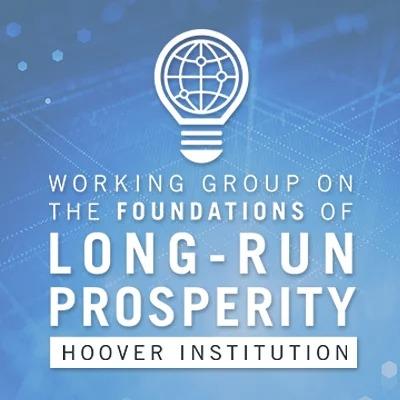This essay is based on the working paper “The Economic Effects of the English Parliamentary Enclosures” by Leander Heldring, James Robinson, and Sebastian Vollmer.
In 1750, the land in over one-third of English parishes—much of the most productive in the country—was not held as private property in the modern sense. Instead, people simultaneously had rights to strips of land spread out in several, usually three, large “open fields,” and in the commons—land that was collectively owned by the community. Though there were systems of governance for both the open fields and the commons, they made it very difficult for individuals to experiment with new crops or techniques, and the commons suffered from the usual problems associated with relatively open access.
Until 1750, the only way to experiment with land management was for those with rights, particularly in the open fields, to unanimously agree to “enclose.” This meant dividing the open fields and the commons between those who possessed rights to them. For the open fields this was clear, but the nature of rights in the commons was complex and overlapping, and some rights had a firmer basis in the law than others. This situation made unanimity hard to achieve. People with access to the commons anticipated that enclosure would favor people whose rights were more legally enforceable—and that they would lose out. So they blocked enclosure. Even though enclosure was potentially highly productive, the nature of the rights created predictable winners and losers, which stopped it from going ahead.
In 1750, parliament created a new mechanism via which a parish could be enclosed through an act of parliament. This involved a bottom-up procedure whereby the individual parish had to petition Parliament and propose to enclose. Critically, for this to happen the owners of only three-quarters of the land by value had to be in favor. This sidelined the people who had previously blocked enclosure by unanimity. To ensure that this three-quarters stipulation was met, a parish had to present to Parliament a consent document that listed all the landowners and whether they were in favor or opposed to enclosure.
The process of parliamentary enclosure was legalistic and remarkable. The act to enclose a parish would appoint a surveyor and three commissioners whose job it was to ascertain the structure of rights and propose a division of land within the parish. The open fields and commons were destroyed and the land divided into contiguous farms. People had to enter into the process without knowing what this proposed division would look like. The procedure enclosed 5,500 parishes in England without parliament having to spend one pound.
In the paper “The Economic Effects of the English Parliamentary Enclosures” we estimate the impact of parliamentary enclosures on agricultural productivity and land inequality. We find very large impacts on both. On average, enclosure increased wheat yields by 44 percent. The effect on productivity seems to come from the much better incentives that the rationalization of land holdings and the elimination of the commons created. For example, we find that agricultural patenting, a measure of innovation and technical change, increased in enclosed parishes. We also find evidence for greater investment in the form of fallowing and the growing of turnips, a crop associated with the “agricultural revolution” and increased soil fertility. We also find significant effects on the quality of road infrastructure.
We also estimate that enclosure increased land inequality by 30 percent. Though the property rights of those who had smallholdings in the open fields were respected, it seems to be the case that often they were left with nonviable farms. One reason for this is that they were not able to establish rights to an allocation of the commons. Another was that enclosure usually rewarded archaic rights, such as the right to collect the tithe, with land. In 1750, tithe holders were ordinary people who had acquired the right to 10 percent of agricultural output. Upon enclosure, this was eliminated but compensated for by an additional amount of land. This further eroded the allocation of smallholders. The costs of enclosure were also high; for instance, lawyers, the surveyor, and commissioners had to be compensated, and these costs had to be paid for up-front. Smallholders who did not have wealth had to sell out to meet these expenses, and the loss of commons and land to the tithe further encouraged this. Indeed, we find that enclosure led to significant reduction in the number of smallholders known as “cottagers”; this is the main reason for the increase in land inequality.
This study is important for our understanding of long-run development for several reasons. A large amount of evidence suggests that poverty is created by inefficient sets of property rights. But why is it so hard to reorganize these and reap the benefits? There are many ideas about this, several of which emphasize that there will be losers in the process who may have the power to stop it happening. Ideally, the winners could compensate the losers, but often this is not credible. This appears to have been exactly the case in England prior to 1750. The key thing Parliament did was to introduce a process that stripped the power from those who opposed enclosure, allowing it to proceed by act of parliament. Yet, they did this in a very legalistic way, with a clear process and where opponents to the measures had many opportunities to air their grievances. Though this did create losers, people seem ultimately to have respected the institutions such that there was far less social unrest than one might have imagined. People sold out and moved on. In fact, the extent of trust in institutions is extraordinary. Even those in favor of enclosure embarked on a process without knowing where it would end or what the final allocation of land would look like. Understanding why English people had such confidence in these institutions and why they respected their outcomes, even when they disagreed with them, seem to be key questions for further research.
Read the full working paper here.
Jim Robinson is the Reverend Dr. Richard L. Pearson Professor of Global Conflict Studies and director of the Pearson Institute for the Study and Resolution of Global Conflicts at the University of Chicago.
Research briefings highlight the findings of research featured in the Long-Run Prosperity Working Paper Series and broaden our understanding of what drives long-run economic growth.

















